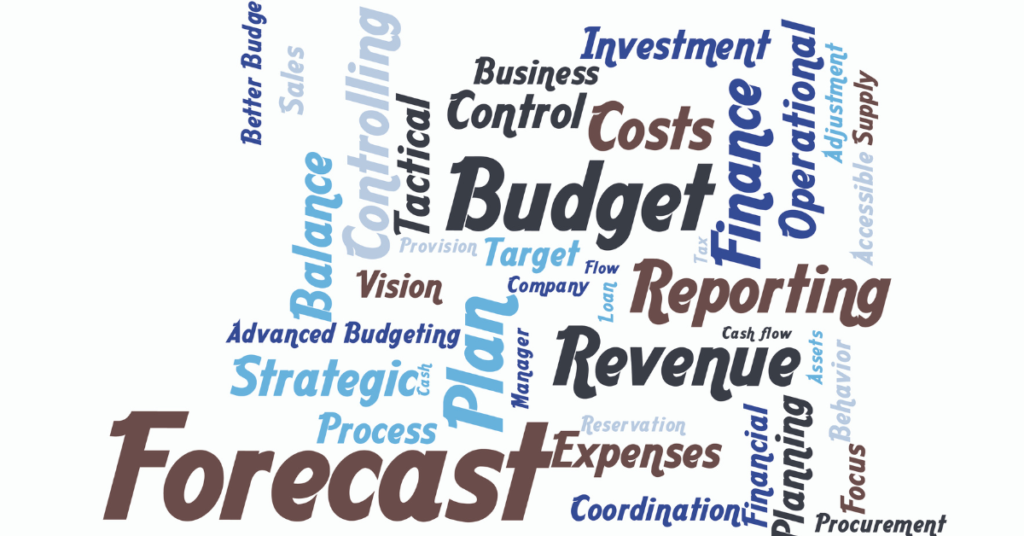
Mar
Things to Consider for Organizing Malaysia's Financial Forecast 2023
In a fast-changing world, we need to realize the development of financial conditions specifically in Malaysia. The higher Malaysian economic growth increased in the second Quarter 2022 and reportedly would continue to be supported by strong domestic demand.
Hence, to strive and survive in the domestic and even global market. The most realistic thing we can do is to organize the financial forecasting. So, what is the financial forecast? Is it different with budget or plan? Let’s take a deep look at how financial forecasts can stand for confronting the unpredictable economic conditions.

Financial Forecast vs Budget vs Plan
Financial forecasts are well-known in business planning and refer to the prediction of the company’s finances by using past or current performance data such as sales, revenue, expenses, etc as to what will happen in the future.
The financial forecast can help an organization or company to adapt to an uncertain demand in the market. Moreover, it also involves the supposition and assumption as well as the unpredictable factors that imply the performance of business. So, is the forecast the same as the budget or plan? Actually, those terms are used in different ways, so here are the differences to get into the same line.
The forecast is a more complex package rather than a plan or budget. Talking about the budget, it will refer to a plan of the amount of specific money that you will spend while a plan concern on the annual forecast that prepared to face the forthcoming fiscal year.
Furthermore, the complex forecast must include cash flow, assets, revenue, sales and liabilities that adjust your plan to depict real performance. For some strategic financial teams or planners, the key performance indicators (KPIs) will be put into the forecast.
Moreover, if you execute financial forecasting well, it will help a company or organization to withstand economic problems and adapt to income and outcome fluctuations. Meanwhile, if your forecasting is not running well or, let’s say, bad forecasting, it will even destroy your business performance.
Before organizing a financial forecast, you may need to know the things to manage the financial forecast to help your business planning. Here we go!
Read more:
All About A Motor Loan Refinancing In Malaysia That You Need To Consider
Car Refinance Compare with House Refinance in Malaysia
When Should You Refinance Your Car

1. Define what you expect from the financial forecast
Before organizing a financial forecast, you must define the purpose first. What do you expect or hope from financial forecasts like how the budget will be shaped by a company’s finances in the future or the estimated services or products will be sold in the future? Defining your purpose will help you to consider the factors or metrics that influence your financial forecast.
2. Build your accurate revenue model
For organizing a good financial forecast, it will be better if you build a comprehensive revenue model. This model will be flexible to run various scenarios if you end up with several questions, such as “What will you do if there is no significant revenue?” or “Which program will be eliminated to maintain the company’s profit?”.
Every kind of business certainly has its own variables based on the industry. For instance, if you are running a law firm, you probably need to put billing rates, client list, legal fee, etc as variables in your revenue model. Meanwhile, it will be different for manufacturers and will take variables like utilization, capacity, the amount of products, etc. No matter what kind of business, the revenue model will help you to organize financial forecasts by building your accurate revenue model.
3. Build your accurate expenses model
In addition to the revenue, you also need the expenses for organizing the financial forecast. There are several things to consider when building your expenses, such as personnel expenses (employee salaries as large expenses), operational cost, fixed and variable expenses, COGS (cost of goods sold), and allocation costs. Build the accurate expenses as well as the revenue model.
4. Collect all relevant past performance data
Financial forecasts need a lot of information related to historical performance data. Hence, make sure you collect all your past financial performance data such as the liabilities, assets, revenue, expenses (losses), cash flow, etc. Those data are one of the components of the forecast.
5. Determine the time frame of financial forecast you need
Generally, financial forecasts are designed to adjust the flexibility of the time frame. You can organize your financial forecast to deliver insight into your business in the future by determining how long the future looks. You can design forecasts for several weeks, months or even years. However, the financial forecasts will be more accurate in the short term, because they will change depending on the market trends. Hence, most financial forecasts are used only for one budgetary year.
6. Determine a method of financial forecast
After determining the time frame, you can determine what kind of method you will use to organize forecasts. There are two methods you can choose, quantitative or qualitative forecasting. Quantitative used past performance data to predict the trends, while qualitative referred to opinions from experts related to the company and the market.
7. Monitor and analyze your financial forecast
You need to monitor your financial forecast to ensure whether it is accurate or not. Moreover, monitoring financial forecasts will help you to update the forecast that depict the current development. After that, make sure to regularly analyze to prepare the next forecast with better organization and management for your company’s financial performance.
8. Apply the previous time frame
After knowing the best forecast for your company, you can try to apply the same time frame to the financial forecast that will fit your next prediction. On the other hand, you can adjust to the current economic conditions. These forecasts are flexible to design and depend on the company’s needs.
Organizing financial forecasts will help a company or organization to survive in uncertain market and economic conditions, especially in Malaysia. Moreover, financial forecasts will assist companies to adjust to domestic demand in Malaysia changing over time. Hence, the financial forecast will guide you to predict what will happen in the future with the best preparation.
Read More:
Type of Refinance in Malaysia
Car Refinancing Loan In Malaysia – PROs And CONs
How to Refinance A Car Loan in Malaysia

